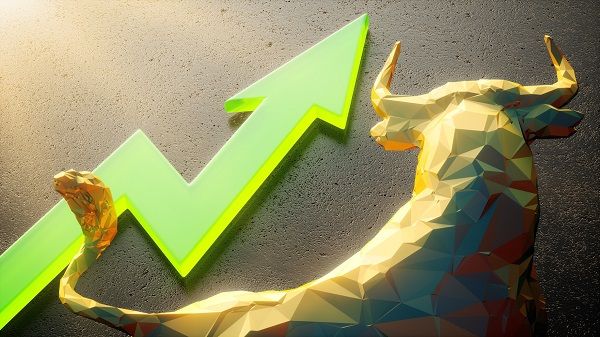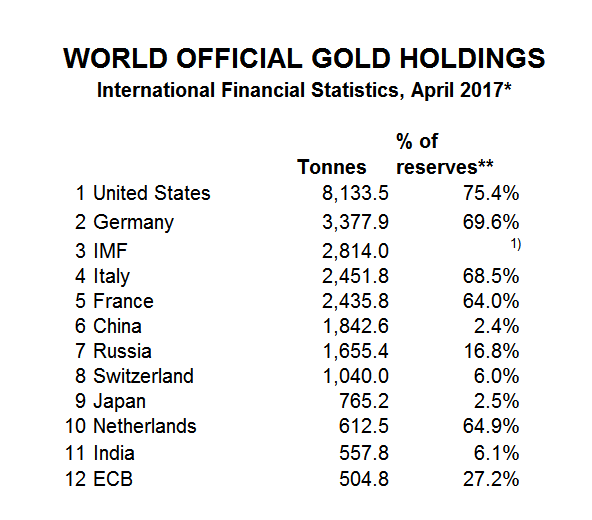This Is Your Brain on Finance
Posted on — Leave a commentToday, investors are drowning in data. As a result, more people are resorting to the ease of intuition for a shortcut. It’s easy to see why the idea of intuition is attractive. We’re all familiar with the fun movie cliché of a detective strolling passed the police line while narrating a detailed account of a crime without any preparation. Intuition is appealing. Unfortunately, it’s also wrong most of the time.

“Behavioral finance” is a branch of psychological theory, which explores the flaws of using intuition in decisions about money. We’re all subject to these pitfalls because they’re inherent in our DNA. While scientists can identify such flaws, it’s unlikely that we’ll ever escape them. However, if we can’t avoid irrationality can we at least account for it when forecasting the market? Researchers writing for International Trade, Economics, and Finance explain why we can.
The authors of the paper “Effect of Behavioral Finance on Gold Price Trend” explore the idea that financial markets might not be as efficient as we once thought. When a market is “efficient,” it immediately responds to changes in the fundamental value of its components. That is, all stock and commodity prices always reflect all relevant information. For example, factors like consumer behavior, international economies, and quarterly earning reports all move the market as soon as they change.
There is, however, an unseen force influencing markets and you won’t find it on a balance sheet. “Financial assets appear as uncorrelated with their fundamentals,” explain the authors.
This phenomenon is evident in the gold market. The researchers aimed to factor in human psychology to more accurately predict gold price trends. Instead of relying purely on economic factors like supply and demand they include a “behavioral component for a better representation of markets reality,” to explain the “observed discrepancy between actual and expectable commodity value.”
Here’s what they found:
Several biases are in play among those investing in the market. One example cited in the paper is the “Anchoring Bias.” This term describes our tendency to rely too heavily on the first piece of information we encounter. Subsequent information, therefore, has less influence in decision-making. The researchers hypothesize that “investors under-react to analysts’ predictions.”
Meanwhile, as investors ignore such predictions, they often place too much emphasis on the prevailing mood of the market. This tendency, the “Safe Value Bias,” is characterized by the fact that “gold demand significantly correlates with markets instability.” Historically, gold has offered a low correlation to most other asset classes. Therefore, when market sentiment becomes fearful, investors turn to gold. While gold can have a stabilizing effect on a portfolio, purchasing the commodity based on short-term outlook is a flawed decision. Instead, gold should be considered a long-term investment that yields value year over year. Too often short-term purchases are driven my shortsighted thinking.
The researchers remind us that cognitive biases are ever-present when investing. Many of us can become more rational investors if we occasionally ask ourselves how emotional impulses influence our choices.
Russia Dominates In Global Gold Purchases
Posted on — Leave a commentThe latest numbers are out and the Russian central bank continues to gobble up large amounts of gold in 2017. During the month of February, the Russians were the largest buyers in the world with official purchases totaling 10 tonnes, according to new data from the World Gold Council.

The Russian central bank has dominated global gold purchases in recent years and has built up its official gold holdings to 1,655.4 tonnes, or 16.8% of its total reserve assets, making it the seventh biggest gold owner in the world.

A Major Shift Seen In This Decade
Central banks around the world have been heavy gold buyers since the global financial crisis hit in 2008. Prior to that central banks had been net sellers of gold for nearly 20 years.
In fact, 2016, marked the seventh consecutive year that central banks were net purchasers of gold and Russia, China and Kazakhstan were the biggest buyers. Central banks have shown an insatiable appetite for gold in recent years and notably in this decade have shifted from being sellers of gold to buyers of gold.
3 Reasons Central Banks Buy Gold
Central banks purchase gold for the same reason that individual investors do:
- Portfolio Diversification. Many emerging market central banks have large foreign currency reserves in the range $200-$300 billion stored in U.S. dollar or euros. They are turning to gold as a way to reduce foreign currency reserves and the risk associated with those country-specific currencies. Central bankers see gold as an asset that can be relied upon if there is another financial crisis. Especially, in the case of emerging market central banks, which have had strong allocations to the U.S. dollar and the euro in recent years – they are looking to spread out reserve asset risk across other currencies including the Chinese renminbi, Australian dollar, Canadian dollar and gold.
- Lack of Credit Risk. There is no country-specific credit risk associated with gold.
- Liquid Asset. In times of economic crisis, paper money can shift dramatically in value, but gold has intrinsic value recognized by all nations around the globe.
A Little History
Many older industrial nations like the United States, Germany and even Italy and France possess large official gold holdings as a legacy of the gold standard years. However, emerging market central banks weren’t a part of that era, and subsequently have been under allocated to gold. Emerging market nations have been in catch-up mode in recent years as they strive to diversify their reserves away from U.S. dollars.
Since the global financial crisis hit, China, the Philippines, Mexico, Korea, Brazil and Russia have all been adding gold to increase their allocation to gold relative to foreign currencies.
China: A Big Player in Gold
Historically, 2009 stands out as a key moment for gold as that marked the year the Chinese central bank officially announced the addition of gold to its monetary reserves. In the second quarter of 2009, Chinese officials reported to the IMF an increase in its gold holdings from 599.98 tons to 1054.09 tones and they have been buying ever since. The Chinese action was the largest central bank purchase recorded in 2009. There is speculation that gold purchases and official holdings are under-reported from China and that they could be holding much greater amounts of gold in reserve.
Big Picture
Central banks continue to buy gold for their official reserves because of heightened economic and financial uncertainty. The global economy remains on very fragile ground. Yields in major industrialized economies remain historically low. The dramatic central bank monetary policy experiments post-2008 have yet to be unwound. The jury is still out on what the negative interest rates and massive balance sheet expansion will mean long-term to the value of fiat money.
Follow the Smart Money
Central banks are smart money, long-term investors. Follow the smart money and diversify your portfolio now with hard assets while gold prices remain at a relative bargain price compared to 2016 levels. Gold prices are already rising up about 9% since the start of the year. Now is the time to take action.
Markets Dump, Gold Soars
Posted on — Leave a commentWith a shortened trading week due to a holiday, domestic equity markets closed in the red last week as more news came into the spotlight regarding renewed military action in the Middle East. This marks the second consecutive weekly loss for stocks.
On Thursday afternoon, the US announced it had deployed the largest nonnuclear bomb in history on an ISIS tunnel complex in Afghanistan. Equity markets did not react well to the news, to say the least.
The financial sector took a particularly severe hit, declining 2.6% for the week. Despite the fact that two of the largest banks in the country, JP Morgan Chase and Citigroup, both beat analysts’ expectations for revenue and adjusted earnings per share last week, both companies saw dramatic declines in their stock prices after news of the military strike in Afghanistan.
When asked if the bomb serves a message to North Korea, President Trump said, “I don’t know if this sends a message. It doesn’t make any difference if it does or not. North Korea is a problem. The problem will be taken care of.” Judging by the market reaction, investors did not interpret this as a particularly calming and reassuring statement. As such, the typical “fear asset,” gold, rapidly transformed into the biggest buying frenzy of the week.
Gold soared to its highest level of 2017 and posted its best weekly gain in almost a year. Precious metals are once again the best performing asset class of 2017, with silver and palladium topping the charts with 15.38% and 16.37% gains, respectively. Gold’s 11.36% YTD gain is finally enough to outshine the Nasdaq 100’s YTD gain of 10.22% for the first time, thereby making gold one of the top performing assets this year.
“We’re in a wait-and-see mode at the moment,” said Kate Warne, a principal and investment strategist at Edward Jones. This certainly seems to be the case as investors are facing unprecedented military and policy events left, right, and center. Moreover, going into the close, gold and volatility (as an asset class) hardly declined at all. In fact, gold rallied into the close and finished only $0.60 away from the YTD high it made early Thursday morning.
For now, it seems “the fundamentals have and will continue to drive the market,” Ms. Warne went on to say. She noted how a group of upbeat earnings reports could lift equities in the coming weeks.
However, if JPM and Citigroup are any indication of what’s to come for stocks, the outlook may not be as optimistic as the strategists ad Edward Jones would like it to be. Meaning, two of the biggest banks in the US posted incredibly positive and solid earnings, but both stocks significantly declined on news of the direct military action in Afghanistan. What does this tell investors?
Well, it has left many investors scratching their heads, because earnings can’t be any more upbeat for blue-chip companies than they were for JPM and Citigroup. Therefore, if declining markets are the reaction to upbeat earnings reports, what will the market reaction will be if a collection of earnings reports are not upbeat? This is the scary reality facing investors today.
This possibility, combined with the potential for more news of US military strikes and stone-cold tensions with North Korea could easily worsen the existing equity market sell-off and instigate a completely uncontrolled tailspin that simultaneously sends precious metals into even more of a buying frenzy.
GFMS Report: Black Swan Events Support Gold Demand
Posted on — Leave a commentThe gold market has been on a tear, recently climbing to a fresh 5-month high. Investors around the globe are pouring into gold as a safe-haven asset.
Some may wonder if gold is overpriced at current levels following the recent gains. To the contrary, most professional investors believe the gold market is going to continue higher from here.
At the end of March, Thomson Reuters GFMS released its Gold Survey 2017, which analyzes developments in the gold market and looks at the trend for prices. Here are the main findings of the report.
The GFMS team sees continued demand for gold as a safe-haven investment especially around two key potential “Black Swan” events – unforeseen events that disrupt and shock financial markets. Here’s two they highlighted:
- Anti-EU election result in one of the European nations.
- Unorthodox policies adopted by President Trump
Other potential black swan events include:
- U.S. equity market downturn
- Risk aversion due to heightened geopolitical tensions
Analysts say if any of these events unfold gold prices are expected to move significantly higher.
4 More Gold Bullish Factors
Central Banks continue to buy gold. In 2016, central buyers were net buyers of gold for the seventh year in a row. GFMS forecasts 250 tonnes of central bank gold purchases in 2017. Russia is expected to lead in purchases, with China closely behind it.
Wealthy Chinese citizens are buying physical gold. Another highly respected gold organization also released its 2017 outlook recently. The consultancy Metals Focus said in its Gold Focus 2017 report that China’s private gold investment rose in 2016. This includes wealthy households, family offices, and professional investors who wanted protection from the weakening Chinese currency and diversification following the January 2016 crash in the Shanghai and Shenzhen stock market.
Real interest rates are negative. The Metals Focus report called the U.S. Federal Reserve’s policies “gold friendly,” as it fails to keep pace from inflation. The authors emphasized the importance of “real interest rates.”
Real interest rate = interest rate minus the rate of inflation
U.S. CPI numbers have climbed above the Fed’s target rate. On a year-over-year basis, the March consumer price index showed a 2.4% gain and that compares to the Fed funds rate currently at 0.75-1.00%.
Key takeaway: the U.S. real interest rate is negative right now.
The supply/demand forecasts for 2017 show a deficit. That means higher gold prices ahead.
Is your portfolio properly diversified? Many Blanchard clients are choosing to re-balance their portfolios and trim equity exposure following the first quarter rally in stocks. They are shifting a portion of those profits into physical gold and silver. Contact Blanchard for a personalized portfolio review at 1-800-880-4653.
Two Points for Triangulating Gold’s Future
Posted on — Leave a commentIt’s difficult to forecast the movement of gold because of so many factors influence prices. However, can the multitude of data points, in fact, be an advantage to analysts? The answer might be yes.

Triangulation is the process of determining an unknown location by using two known points. Surveyors often use this method to orient themselves. From two points, they identify their position by creating a triangle. This technique of using relative measurements offers interesting implications for gold investors. Amid the spectrum of data, are there two key points that can help forecast the future of gold? Perhaps two pieces of information about today and tomorrow can help place gold’s future.
Today: Geopolitical Uncertainty
Markets and the world continue to wait and wonder about the fate of global politics. Brexit awoke many to the fact that the unexpected can happen. Reinforcing this lesson was the election of Trump. Polls and media outlets initially dismissed the candidate. Today, many are questioning if expectations of globalism are misplaced.
In France, populist candidate Marine Le Pen is tied with independent candidate Emmanuel Macron to win the first-round vote on April 23rd. Le Pen’s well-publicized ambitions to pull out of the eurozone echo Britain’s latest move. Meanwhile, U.S. strikes against Syria have left many on both sides unclear on Trump’s international stance.
How has this uncertainty influenced gold? “Gold prices shot to their highest level in five months,” reported The Wall Street Journal just days ago. While that movement is short-term, there is reason to believe the trend could continue. Elections and international policy continue to steer us away from globalism. As a result, renewed interest in gold and its identity as a hedge may boost prices.
As senior asset strategist with NN Investment Partners remarked: “Over longer periods, correlation between broad commodity prices and policy uncertainty is low to slightly negative.” However, he pointed out that “exceptions include precious metals with a more pronounced positive correlation.”
Tomorrow: Mining Industry
The nationalistic stance of our leaders today is mirrored in the mining industry of tomorrow. “Many governments have not softened their stances around resource nationalism,” remarked authors of an industry report from Deloitte. This isolation slows supply growth because countries are unwilling to grant permits for mining operations. The Deloitte report laments the burden of taxes, fees, and royalties on miners. Increasingly, miners are learning that gold is more expensive to source.
Compounding these balance sheet problems are labor issues. Countries rich with potential for miners are hesitant to engage in a relationship. The reason: countries see mining firms as exploitative of the workforce. “It doesn’t help that mining company taxes do not translate into direct infrastructure investments, making it difficult for many stakeholders to understand the real contribution miners are making in their communities,” explains the same report.
Some have suggested that miners should return more wealth to the countries in which they’re operating. Others urge miners to engage host countries in a dialogue about long-term benefits to GDP resulting from resource extraction. While some of these ideas may work, they will require time to implement. Additionally, more time will be needed to see the results of these new efforts. In the meantime, demand will outstrip supply and prices are likely to rise.
Both recent geopolitical uncertainty and long-term mining woes underpin a bullish outlook on gold as an investment for the future. These two separate points help locate where gold may go in the years or even decades to come.
What Happens When a $1.88 Trillion Player Enters the Gold Market?
Posted on — Leave a commentEarly in 2017, The World Gold Council (WGC) published a report forecasting changes in the gold market. Now, with the first quarter at a close, we’re beginning to see how these projections are unfolding.

The authors were optimistic about the growing global interest in gold. Moreover, increased access, they argue, will empower nascent markets to become significant gold purchasers. “Gold is becoming more mainstream,” the WGC writes. They explain that in the previous decade gold ETFs created easy access for investors. However, in the coming years, other markets will become key players leading to “structurally higher demand.” The WGC forecasts that while China and Japan will drive demand, the biggest player might be the Muslim market. Here’s why:
In November of 2016 newly enacted Shariah-compliant regulations made gold an acceptable investment in Islamic finance. The Accounting and Auditing Organization for Islamic Financial Institutions values this industry at $1.88 trillion. The move is expected to unleash pent-up demand among the world’s 1.6 billion Muslim population.
That total represents nearly 25 percent of the planet.
“This is a ground-breaking initiative for Islamic investors and for the gold industry at large,” remarked the CEO of WGC. Data from the Islamic Finance Stability Board indicates that Shariah-compliant assets under management will grow to US$6.5 trillion by 2020. The WGC explains “just a 1% allocation to gold would equate to nearly US$65 billion or 1,700 tonnes in new demand.” Only four months have passed since the ruling, but the market is already experiencing some encouraging signs. Gold is up 10.75 percent for the year. It’s still early to know to what extent the growth comes from this new market, but the forecast remains encouraging.
In the meantime, gold purchases in other nations remain equally robust. As volatility in the equity market grows, investors are seeking haven instruments to preserve wealth. Increasing instability within the White House is a contributing factor. “Faith in the Trump trade is shaken,’’ remarked the head of global interest-rate strategy at TD Securities.
Additionally, China has a growing appetite for the commodity. In recent years ordinary investors have been able to purchase gold through a new investment product affordably. “Gold Accumulation Plans” on the Shanghai Gold Exchange create a dollar averaging system for making regular investments in gold. It’s reasonable to estimate that this innovation has contributed to the furious pace of purchases within the country.
These changes from the Accounting and Auditing Organization for Islamic Financial Institutions illustrate the global underpinnings of the gold market. As gold ETFs become Shariah-compliant, we’re likely to see gold prices increase further. We’ve previously discussed why ETFs lack benefits of owning physical gold. However, the ease of purchasing these funds for Islamic investors taking advantage of the ruling may very well rally prices.
Investment decisions, especially commodities, are best viewed from an international perspective. The return on investment goes beyond the inherent value. Mining, geopolitical events and now an entirely new market are all weighing in on long-term price appreciation.
Gold Soars To 5-Month High on Syrian Strike, Weak Jobs Report
Posted on — Leave a commentGold prices skyrocketed to a five-month higher on Friday in a traditional flight-to-safety move after President Trump ordered a U.S. missile strike on a Syrian air base in retaliation for a chemical weapons attack on Syrian citizens.

Market Reaction
- Gold: The gold market tacked on additional gains on Friday after the Labor department reported a mere 98,000 new jobs were created in March, dramatically lower than the 175,000 new jobs expected by economists.
Safe-haven buying and ideas that the weak jobs report could delay or slow future Fed interest rate hikes propelled spot gold to an intraday high at $1,272.10 an ounce, a five month high.
- Stocks: The broad stock market swung slightly higher and fell to a modestly lower close Friday. Defense stocks were big winners as shares of Raytheon, Lockheed Martin, and Northrop Grumman closed out with strong gains.
- Crude Oil: The potential for additional escalation in Syria also sent crude oil prices sharply higher on Friday, which is also supportive to the gold market from an inflationary perspective. Crude oil spiked higher amid concerns that President Trump could be now taking a more interventionist approach to the region and if conflict were to spread to Iraq it could disrupt crude oil production.
Rising Risks on the Horizon
Rising geopolitical uncertainty and concerns about cracks in the economic picture have created fresh investor appetite for gold. Increasing tensions with North Korea and upcoming French elections are boosted demand for gold as a safe-haven investment.
Potential Conflict with Russia
The U.S. missile strike against Syria puts the U.S. relationship with Russia at risk. On Friday, Russian President Vladimir Putin called the missile strike President Trump ordered against Syria “an act of aggression against a sovereign state delivered in violation of international law under a far-fetched pretext.” Also Russia initiated an emergency meeting of the United Nations Security Council to discuss the incident. On Friday afternoon it was reported that Russian warships were steaming toward the U.S. Navy warships that launched the Syrian attack.
Meeting with Chinese Leader
Also on the radar, on Monday financial markets will be digesting any fall-out from the weekend meeting between Chinese President Xi Jinping and President Trump, which concludes on Saturday.
Good Buying Levels Are Seen Now
Gold slipped off its highs on Friday, pressured in part by strength in the U.S. dollar. Current levels continue to offer investors a relative bargain compared to prices recorded in 2016.
Last July, gold prices traded as high as the $1,390 an ounce level. Precious metals traders are monitoring the $1,265 an ounce level closely and sustained strength above that zone could be the green light for another strong rally wave in the yellow metal with the $1,300 level as the next bullish chart objective.
Middle East and Russian tensions are rising. Missiles are flying and the economic picture may not be as strong as Fed officials believed earlier.
How much of your portfolio is invested in stocks? Financial advisors warn that holding too much of your assets in stocks could leave you exposed to more risk and volatility than you may be comfortable with.
Take the time to assess your risk tolerance level. Research has shown that diversifying a portfolio with up to 20% of precious metals exposure can reduce volatility and produce better longer-term returns. Plus, you may be able to sleep better at night knowing that your portfolio is properly diversified.
Are you ready to protect your assets? Contact Blanchard today for a free, personalized portfolio review at 1-800-880-4653.
Some Lawmakers Seek to End Capital Gains Tax on Gold
Posted on — Leave a commentA tax on capital gains from the sale of gold is a tax on inflation. That sentiment is the underpinning of Republican Ron Paul’s arguments for a gold tax exemption in Arizona. The 2014 bill comes from Rep. Mark Finchem.

Paul urged the state Senate in Arizona to tax citizens “more honestly” while arguing that it’s unfair to punish people for attempting to safeguard against inflation.
The argument is timely. In February consumer inflation exceeded the Federal Reserve’s targeted annual gain of 2%. The trend marks a welcome departure from the unemployment and excess capacity that slowed the economy in previous years. Fed Chairwoman Janet Yellen was clear in her March press conference. “We expect core inflation to move up,” she remarked.
The importance of this 2% milestone is significant. The U.S. still experiences reverberations from the global financial crisis nearly a decade later. Inflation has been below 2% since May of 2012. Many gold purchasers keep a close eye on such figures. Gold has become more attractive for investors in our low-rate environment. It’s easier for investors to ignore interest-bearing instruments for gold when yields are depressed. Moreover, recent equity market volatility amid a tumultuous new administration will likely invigorate interest in gold. There is no perfect inverse relationship between stocks and gold. However, the commodity is useful as a diversification strategy. “You need to have the insurance when the fire happens,” remarked the CEO of one gold ETF firm.
Paul, however, met with resistance while testifying before the Senate Finance Committee. Democratic Senator Steve Farley from Tucson dismissed statements from Paul calling the measure merely a “tax giveaway to coin collectors.”
The pivot point in the debate centers on face value. While Paul argued that it’s illogical to tax money, Farley countered that a coin with a $20 face value is worth far more today. Speculators who are choosing gold as an investment, he claims, should be taxed just like those owning stocks and bonds. Paul maintained that stocks and bonds are different because they aren’t money. It appears the argument did not convince Farley.
The debate illustrates two different perspectives. Farley contends that over the decades gold has risen in value. Paul, however, remains firm that the inherent value of a gold coin is unchanged. Paul believes that the price appreciation of a coin is merely a relative measure; the coin hasn’t increased in value. Instead, paper money has dropped he argues.
Beneath the philosophical musings of Paul and Farley are likely more pragmatic impulses. Perhaps Paul and his constituents have personal financial stakes in the outcome of a lesser tax burden. Meanwhile, Farley, if ultimately unsuccessful may see a significant drop in state tax receipts.
The bill passed the House and eventually received a 4-3 vote approval in the Senate Finance Committee. The next hurdle will be the full Senate where some remain opposed. Similar measures have seen success in other states. In March of this year, the Idaho House of Representatives voted to end all state taxation on gold and silver by a 56-13 margin.
The Blanchard Economic Update – April 2017
Posted on — Leave a commentThe “animal spirits” are alive and well in the U.S. economy in early 2017. Economist John Maynard Keynes pointed to so-called animal spirits to describe how emotion and instinct guide human decisions, which can drive (or contract) overall economic activity.

Despite the political turmoil in Washington, the U.S. economy continues to chug along in its eighth year of expansion. The U.S. economy is projected to grow at 2.3% pace in 2017, according to S&P Global forecasts and the Federal Reserve is expected to raise interest rates two more times this year, pushing the benchmark fed funds rates to 1.25-1.50% by December.
Metals Produce Out sized Returns
The precious metals markets trounced equities in the first quarter 2017 as palladium and silver delivered out sized returns. Global investors continue to pour money into precious metals amid growing uncertainty over the scope and size of Trump Administration proposals regarding tax cuts and infrastructure spending.
Here’s a quick snapshot of market returns through March 31, 2017:
Palladium + 16.70%
Silver + 13.80%
Gold + 8.06%
Platinum + 4.69%
S&P 500 + 5.53
Data source: barchart.com, CNN Money

Here is a look at six economic indicators gold investors should consider now.
1. The Labor Market Is Hot
Employers continue to pump out new jobs and 235,000 new non-farm jobs were created in February. The so-called “Quit Rate,” which represents the number of workers who quit their jobs each month and is considered a gauge of confidence in the labor market matched its post-crisis high at 2.2% in January.
2. Inflation Hits 5-Year High
The Federal Reserve’s “preferred” inflation gauge – the personal consumption expenditures index hit a 2.1% annualized reading in February, the highest level since March 2012 for that price measure.
3. Stock Market: The stock market is overstretched, and overvalued.
- Equity Market Risk: Extremely High – especially once the seasonally weak May-November stock market period
“Price-to-earnings (PE) ratios look stretched relative to historical ratios. The widely used cyclically adjusted Shiller PEratio is 28x, well above the pre-crisis peak and not far off the average dot-com bubble levels of around 34x. Forward PE ratios also are well above their historical average,” according to Standard and Poor’s.
4. Consumer Spending
Cracks in the picture have emerged on the consumer side in recent months. U.S. consumer spending fell in February, with weather and delayed tax refunds weighing on the consumer. In February, consumer spending fell 0.1%, following a 0.2% decline in January. The February decline leaves real consumer spending up only 0.5% on an annualized three-month basis, which is the weakest since 2013.
5. Eye on Washington
In the wake of the failed attempt to repeal and replace the Affordable Care Act, the Republicans are shifting their focus to tax reform. The size and scope of the package that is passed will be important to financial markets. The stock market has already priced in expectations of significant tax reform that will boost corporate earnings growth down the road.
6. Federal Debt and Deficit
The federal debt has increased substantially over the past decade and as a share of GDP is the highest since 1948. Additionally, federal deficits and debt are expected to increase further in coming years, Nomura says.
Investing Insights
The current environment includes many political and economic risks. Inflation is rising. The stock market is vulnerable to a sell-off and uncertainty remains high regarding the future of the European Union as France readies for a new presidential vote in April and May.
Gold and silver prices are trading well below their 2016 price highs. Current levels represent a relative bargain for long-term investors seeking effective portfolio diversification. Investing in physical tangible assets, including gold and silver, reduces overall portfolio volatility especially during times of severe stock market stress. Call Blanchard at 1-800-880-4653 for a personalized portfolio review.
As The First Quarter Ends, Here’s What to Expect in Q2
Posted on — Leave a commentThe first fiscal quarter of 2017 officially ended on Friday of last week as US equities posted another solid weekly and monthly gain. Despite the longer-term trend of decent gains, equities around the world were mostly mixed during trading on Friday.

For equities in Asia, Hong Kong’s Hang Seng Index was down 0.78%, while Japan’s benchmark Nikkei 225 was down 0.81% for the day. Trading was not much better in Europe either, as London’s FTSE 100 closed down 0.63% for the day.
Analysts are attributing the lackluster final day of Q1 trading to the incredibly persistent political and economic uncertainty that started late last year and has ceased to abate. This is especially the case for equities in Europe, as British Prime Minister Theresa May signed and invoked Article 50 and officially started Brexit.
From when the article was invoked on Wednesday of last week, there are now less than two years and counting before the UK physically withdraws from the EU. In spite of the 24-month time-frame before any changes are felt, the signing of Article 50 seemed to unnerve some investors.
In terms of commodities, crude oil is back above $50 per barrel and ended with a sizable weekly gain of over 5.50%. Gold and silver are slightly negative for the month, but both metals posted an impressive gain of over 8% and 13%, respectively, for the first quarter.
Coming off a failed health-care reform attempt last week and a subsequent market sell-off of equities and other risk assets, investors looked towards economic data this week to gauge the direction of the economy.
Because of this, overall investor worry (measured by the VIX index) declined last week after a multitude of outstanding economic data was released. In fact, equities rallied nicely on Tuesday after consumer confidence exploded to the highest level since 2001. Domestic equities continued their gradual upward drift throughout the week.
As the second quarter is now here, so is a new earnings season. Judging by the surprisingly upbeat economic data released in the past few weeks, it’s safe to say market participants will not be overly shocked to see companies releasing solid earnings. If earnings reports are strong, markets will, as a result, edge higher. Earnings reports are only released four times per year, and they are one of the major drivers of overall market direction.
But many investors are not so sure Q2 will be full of rainbows and sunshine. With political uneasiness that just refuses to go away, apprehensions about the market are commonplace. Moreover, margin debt, or the amount of money retail and institutional investors borrow against their brokerage accounts for additional buying power, hit an all-time high in February.
This means market participants are using a lot of leverage with the expectation that prices will rise. If, however, prices fall dramatically, things could turn sour very quick due to the unprecedented level of leverage.
All-time market highs, all-time margin debt, and shocking political upsets (Brexit and the US election) all occurred during Q1, defying almost everyone’s expectations. So what does Q2 hold for the markets? The simple answer is: it’s anyone’s guess.








